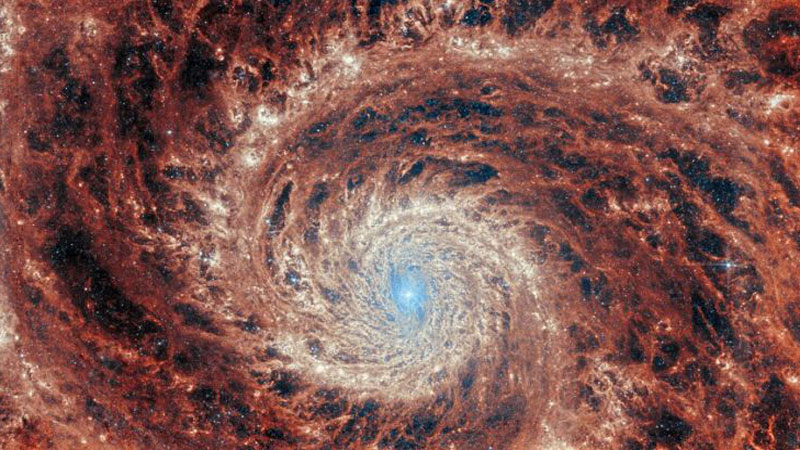“James Webb” discovered at the dawn of the Universe one of the perfect galaxies, which even now is outmatched


One of James Webb Observatory’s scheduled sky surveys led to a random but surprising discovery. In the telescope data, scientists discovered one of the most perfect galaxies known in the Universe – a spiral galaxy with an ordered structure. No more than 10% of such galaxies were discovered in the later stages of the evolution of the Universe. Webb recorded this miracle of perfection just one billion years after the Big Bang.


The nearby galaxy M1 is an example of a spiral galaxy with an ordered structure. Image source: NASA
The discovery was made by a team led by astronomer Mengyuan Xiao from the University of Geneva in Switzerland. The galaxy was named Zhu-long (ancestor dragon or dragon with a torch).
«Zhu-long shows that mature galaxies emerged much earlier than expected, during the first billion years after the Big Bang, the team writes. “Our discovery imposes serious constraints on models of the formation of massive galaxies and the origin of spiral structures in the early Universe.”
Most of the spiral galaxies known to us occupy an intermediate position between strictly ordered and fragmented. There are only about 10% of galaxies with a strictly ordered structure – with neat and symmetrical arms and clearly defined structural elements. It takes an extremely long time to create such an order.
The Zhu-long Galaxy in Webb data. Image source: University of Geneva
It was all the more surprising to discover such a galaxy just one billion years after the Big Bang. This indicates that galaxies like our Milky Way should be evolving ten times faster than previously thought, and nothing similar is observed around us. Moreover, before Webb, we had not seen such well-structured galaxies at distances of up to 11.5 billion light years. The Zhu-long Galaxy was discovered at a distance corresponding to the age of the Universe 12.8 billion years ago, which requires its own explanation.
Analysis of the Zhu-long data showed that the rate of star formation in this galaxy is slowing down and at the time of observation ranged from 20 to 155 solar masses per year (for comparison, the star formation rate in the Milky Way is about three solar masses per year). The black hole at the center of Zhu-long shows a state of rest. By all indications, the galaxy completed its evolution at a time when the Milky Way was just beginning its formation. But even now the Milky Way is not as organized as Zhu-long was 12.8 billion years ago.
Recent Posts
- Servers, clusters, supercomputers, industrial and multiprocessor computers
- Technology and IT market. news
Nvidia has lost the right to freely supply H20 accelerators to China, it will have to write off $5.5 billion
Just recently, the press discussed concessions made by the current American authorities to Nvidia, which…
- Servers, clusters, supercomputers, industrial and multiprocessor computers
- Technology and IT market. news
Nvidia has lost the right to freely supply H20 accelerators to China, it will have to write off $5.5 billion
Just recently, the press discussed concessions made by the current American authorities to Nvidia, which…
Zuckerberg Was Considering Spinning Off Instagram Long Before FTC Lawsuit
Mark Zuckerberg does not rule out the possibility of spinning off Instagram✴ into an independent…
ChatGPT’s Main Competitor Learns to Do Deep Research and Dig into Gmail
Anthropic, the developer of the AI assistant Claude, has unveiled a new tool called Research…
ChatGPT’s Main Competitor Learns to Do Deep Research and Dig into Gmail
Anthropic, the developer of the AI assistant Claude, has unveiled a new tool called Research…
Vastarmor Unveils Factory Overclocked Radeon RX 9070 XT Alloy Without Backlighting
Vastarmor, AMD's partner in China, has unveiled the Radeon RX 9070 XT graphics card in…